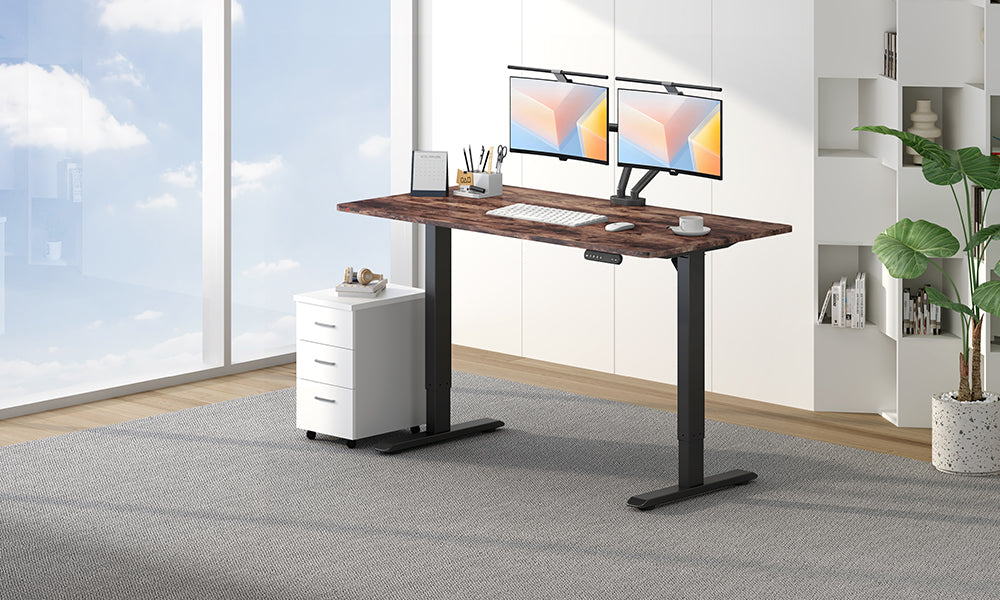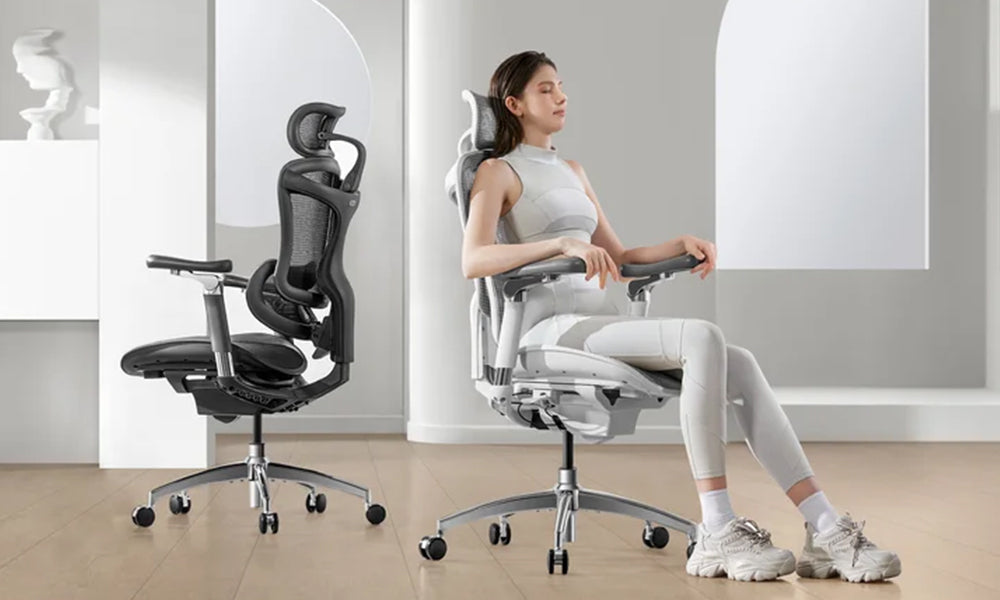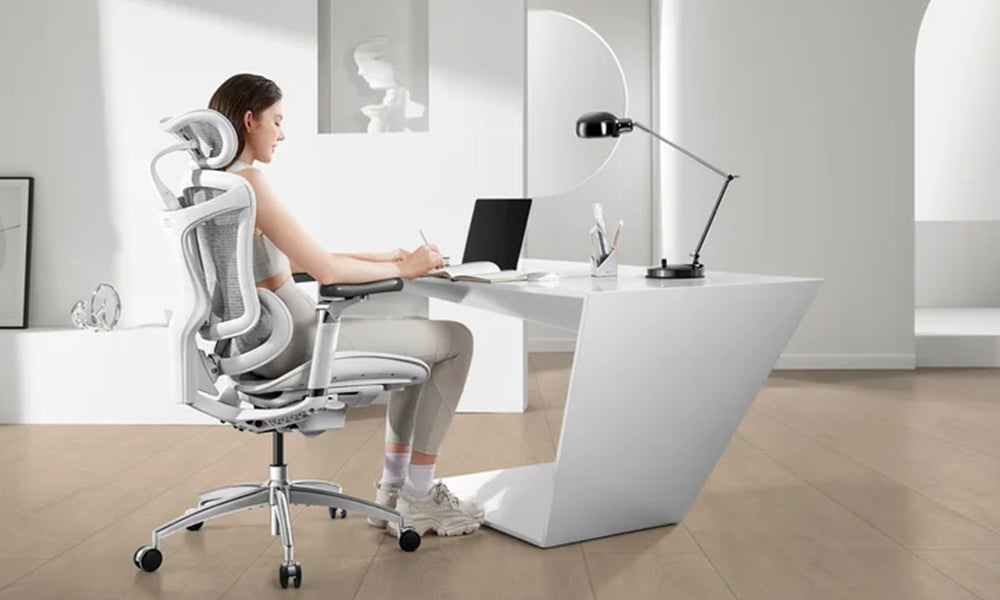For many office workers, back pain is a constant companion. Hours spent hunched over keyboards translate to tightness, aches, and a general feeling of discomfort. In the quest for ergonomic solutions, standing desks have emerged as a popular option. But do they truly live up to the hype of banishing back pain? Let's delve into the research, explore the potential benefits and drawbacks, and equip you with the knowledge to decide if a standing desk is your ergonomic knight in shining armor.
The Science Behind Standing and Back Pain
The research on standing desks and back pain presents a mixed picture. Some studies suggest a positive impact. A 2018 study published in the journal of UT Southwestern Medical Center found that participants who used standing desks alongside behavioral counseling for reducing sedentary behavior experienced a 50% decrease in lower back pain compared to a control group. The theory behind this benefit lies in the potential for improved posture while standing. Sitting for extended periods can lead to a slouched position, putting strain on the spinal discs and muscles. Standing can encourage a more natural alignment, alleviating this pressure.
However, the evidence isn't all sunshine and rainbows. Several studies haven't found a significant difference in back pain between sitting and standing desks. Additionally, prolonged standing can introduce its own set of problems, such as leg fatigue and discomfort in the feet and ankles.
Here's the key takeaway: standing desks might be a helpful tool for some, but they're not a guaranteed cure-all.
Beyond the Back: A Holistic Approach to Comfort
While back pain is a major concern, it's crucial to consider a holistic approach to ergonomics. Here are some additional factors to keep in mind:
- Posture: Whether sitting or standing, proper posture is paramount. Invest in a good ergonomic chair with adjustable features to support your lower back and encourage a neutral spine. While standing, avoid locking your knees and ensure your monitor is at eye level to prevent neck strain.
- Movement is Key: Our bodies are designed to move. Don't get stagnant! Set a timer to remind yourself to get up and walk around every 30 minutes. Stretch your legs, roll your shoulders, and take the stairs whenever possible.
- Strengthen Your Core: A strong core provides crucial support for your back. Engage in exercises that target your abdominal and back muscles to improve stability and posture.
Standing Desks: Friend or Foe?
So, should you rush out and buy a standing desk? Here's a breakdown to help you decide:
Pros:
- May Reduce Back Pain: Studies suggest a potential benefit for some individuals, particularly when combined with good posture habits.
- Increased Activity: Standing burns more calories than sitting, promoting overall well-being.
- Improved Blood Sugar Control: Standing after meals may help regulate blood sugar levels.
- Enhanced Alertness: Some users report feeling more energized and focused while standing.
Cons:
- Not a Guaranteed Fix: Standing desks might not address the root cause of back pain, especially for pre-existing conditions.
- Risk of Discomfort: Prolonged standing can lead to leg fatigue, foot pain, and varicose veins.
- Cost Factor: Standing desks can be a significant investment.
The Verdict: A standing desk can be a valuable addition to your ergonomic toolkit, but it's not a one-size-fits-all solution. Consider your individual needs and preferences. If you're curious about trying a standing desk, it might be wise to start gradually, alternating between sitting and standing throughout the day. Listen to your body and adjust your workstation accordingly.
Pro Tip: If you're on a budget or unsure about committing to a full-fledged standing desk, consider a converter. These affordable platforms elevate your existing desk, allowing you to experiment with standing for a portion of your workday.
Beyond the Desk: Additional Ergonomic Tips
Here are some additional tips to create a comfortable and healthy workspace:
- Proper Lighting: Avoid glare and eye strain by using appropriate lighting. Task lights can be helpful to supplement overhead lighting.
- Temperature Control: A comfortable room temperature helps prevent muscle tension and discomfort.
- Hydration: Staying hydrated is essential for overall health and can contribute to improved posture.
- Take Breaks: Don't forget to take regular breaks to stretch, move around, and rest your eyes.
- Consider a Footrest: A footrest can help improve circulation and alleviate leg fatigue while standing.
- Consult a Professional: If you experience persistent back pain, seek advice from a physiotherapist or ergonomist. They can help you create a personalized workstation setup and recommend exercises to strengthen your core and improve posture.
Standing desks have become a hot topic in the ergonomic world, but navigating the information overload can be confusing. Here, we'll address some frequently asked questions to help you make an informed decision:
Q: How long should I stand at a standing desk?
A: There's no one-size-fits-all answer. A good starting point is to alternate between sitting and standing throughout the day. Begin with short standing intervals (15-20 minutes) and gradually increase the duration as your body adapts. Listen to your body and take breaks when you experience discomfort.
Q: What if my job requires a lot of computer work? Is a standing desk still beneficial?
A: Absolutely! Standing desks can be particularly helpful for computer-based jobs that involve long periods of sitting. However, it's crucial to maintain proper posture while standing. Ensure your monitor is at eye level and your wrists are in a neutral position. Consider using an anti-fatigue mat to provide additional comfort for your feet and ankles.
Q: I'm worried about getting tired while standing. What can I do?
A: Fatigue is a common concern, especially when transitioning to a standing desk. Here are some tips to combat it:
- Start Slowly: Gradually increase standing intervals throughout the day to allow your body to adjust.
- Take Breaks: Don't be afraid to sit down when you need a rest. The key is to avoid prolonged static postures, whether sitting or standing.
- Strengthen Your Core: Strong core muscles improve stability and posture, reducing fatigue while standing.
- Invest in an Anti-Fatigue Mat: These cushioned mats provide support and promote circulation in your legs.
- Wear Comfortable Shoes: Supportive footwear can make a big difference in reducing foot and ankle discomfort.
Q: Are there any health conditions that might make a standing desk inadvisable?
A: While standing desks offer potential benefits, they might not be suitable for everyone. If you have any pre-existing health conditions, such as varicose veins, severe knee pain, or arthritis, consult with a doctor or physiotherapist before using a standing desk. They can help you determine if a standing desk is right for you and provide guidance on proper ergonomics.
Q: I'm on a tight budget. Are there affordable standing desk options?
A: Yes! Standing desk converters are a budget-friendly alternative to full-fledged standing desks. These platforms elevate your existing desk, allowing you to experiment with standing for a portion of your workday. You can also explore DIY solutions, such as creating a standing desk riser using sturdy boxes or cinder blocks.
The Final Word
Standing desks can be a valuable tool in your quest for a comfortable and healthy workspace. However, they are just one piece of the ergonomic puzzle. Remember to prioritize good posture, take regular breaks, and incorporate movement throughout your day. By adopting a holistic approach to ergonomics, you can create a workstation that supports your well-being and keeps you productive.



